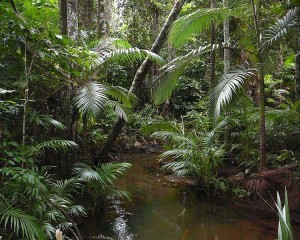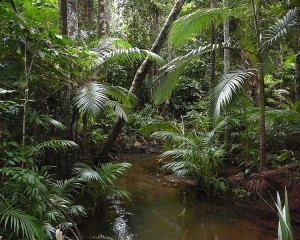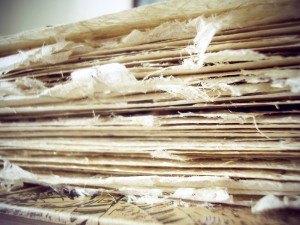- Posted March 11, 2015, 9:27 a.m. - 9 years, 1 month ago
Reducing environmental impact in 2015
We all know the impact that wasting paper has on the environment and our rainforests across the world, with trees being chopped down faster than they can be planted and grow – in February this year, reports came in from Greenpeace that ancient forest areas three times bigger than Paris were being systematically destroyed to make paper, in a time period of less than a year! We all hear the phrases, “do your bit to save the trees” and “going green”, bandied around but do any of us truly think about how our individual efforts work together to form a bigger picture in helping the save the rainforests?
Did you know…?
- The city of Paris covers 40.7 sq miles – multiply that by 3 and that’s a coverage of 122.1 sq miles. If only an area of 4 sq miles of rainforest holds 1,500 flowering plants, 400 species of birds, 150 species of butterfly and 750 species of tree, think how many of these will be demolished or forced to move if an area three times bigger than Paris is destroyed – that would be 45,750 flowering plants, 12,200 species of bird, 4,575 species of butterfly and 22,875 species of tree!
- In a 12 year gap between 2000-2013, 2.3 million square kilometres of forests around the world were cut down. That’s roughly the size of all of the states in the U.S. east of the Mississippi River. Working with our numbers as above, that means that 862500000 flowering plants, 230000000 species of bird, 86250000 species of butterfly and 431250000 species of tree were destroyed or forced to relocate in those years!
- Many plants identified as being useful in cancer treatments live in the rainforests, including Rosy periwinkle (used in treating childhood leukaemia and Hodgkins’ Disease), berries of the Blushwood tree (compounds of which are used experimentally to destroy cancerous tumours and melanomas) and Cat’s Claw (currently being used in trials for cancer and AIDS)
- There are over 1.2 billion people living in poverty across the world, and 90% of these depend on the rainforests for their livelihoods
- Rainforests are found on every continent except Antarctica, and act as the thermostat of the world, regulating temperatures and weather patterns.
So what can we all really do to help cut down the need for paper and the resulting destruction of the rainforests?
Save paper. Everyone says it but who really does it. It’s much easier to throw waste paper in the bin than keep it hanging around the office to reuse – and for client documents, it’s not like you can reuse paper that has incorrect or old data on the back. Understandable, but this kind of scrap paper can be used for keeping to-do lists and notes – no need to then go and buy a To-Do notebook or telephone message pad!
Work electronically. Email documents rather than print them, and work from computer screens in meetings unless absolutely crucial that documents are given in printed form. After all – we create and edit our documents electronically now the majority of the time, so the final stage of keeping them and displaying them electronically shouldn’t be too far a leap!
Buy environmentally friendly paper. If you do need to print documents, try to use recycled paper that does not contribute to rainforest destruction. Examples including Banana, Hemp & Tree-Free paper. This may cost a little more than “normal” paper, but make sure you limit use so documents are only printed when absolutely necessary.
Think outside the office. No need to leave your good habits at the office door. Invest in recycled toilet paper and kitchen roll and suggest that everyone take their paper-saving skills home to keep up the good work out of hours.
If nothing else, think about the environmental aspects of using a lot of ink on a daily basis. Not only is it toxic (though we would hope nobody in your office is licking it), the amounts of heavy metals, non-renewable oils and volatile organic compounds found in ink have led to the formation of regulatory bodies concerned with standards in ink production, with vegetable oils now being introduced as an alternative to petroleum oils. The oil content of one sheet-fed litho page makes up around 35% of the total amount of ink on the page – that’s a lot of oil, especially on large documents! For a page using coldest web offset ink that does not use heat to dry, this rises to approx. 75%!
Latest Articles
-
Our latest testimonial for Infix 6
Dec. 19, 2016, 2:40 p.m. -
Most commonly translated Turkish words
Feb. 6, 2015, 9 a.m. -
Merry Christmas & A Happy New Year
Dec. 25, 2016, 8 a.m. -
New Save PDF to SVG feature introduced to Spire.Office
Dec. 23, 2016, 11:54 a.m. -
Editing educational PDFs – a user perspective
July 21, 2014, 8:03 a.m.




